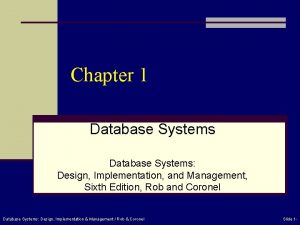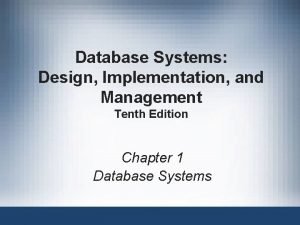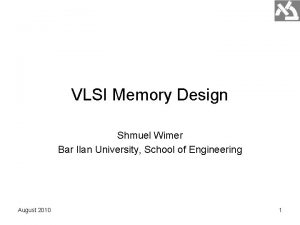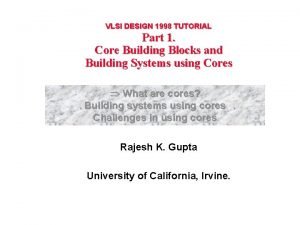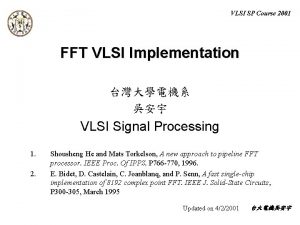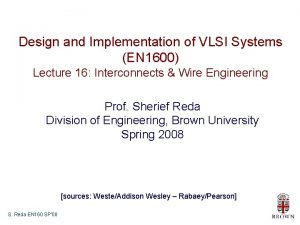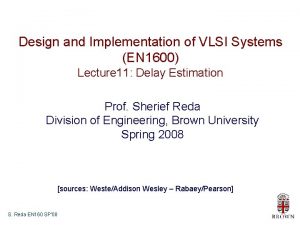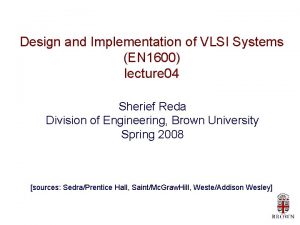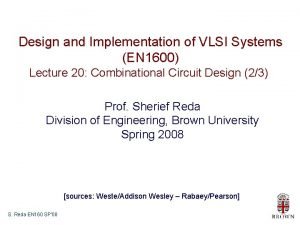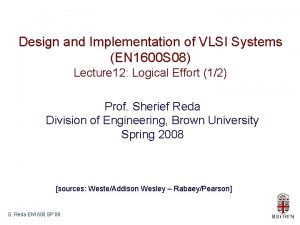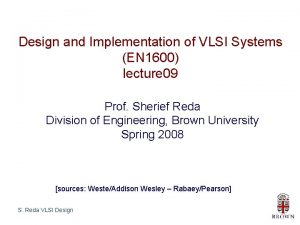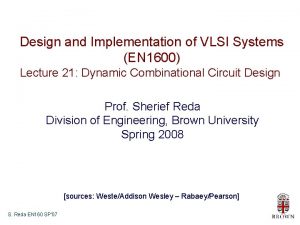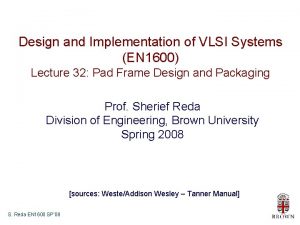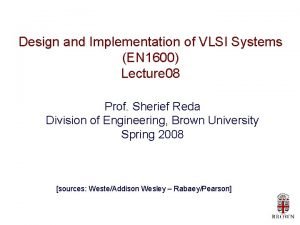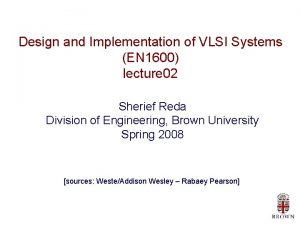Design and Implementation of VLSI Systems EN 1600












- Slides: 12

Design and Implementation of VLSI Systems (EN 1600) Lecture 27: Datapath Subsystems 3/4 Prof. Sherief Reda Division of Engineering, Brown University Spring 2008 [sources: Weste/Addison Wesley – Rabaey/Pearson]

Manchester carry adder • Using transmission gates • Using dynamic gates

Manchester carry chains Critical path involves a series propagate transistor for each bit a significant over carry-ripple (which used majority or AND-OR gate)

Equivalence circuits for Manchester carry chain

Carry skip adder Co, 3 A 3 B 3 A 2 B 2 A 1 B 1 A 0 B 0 FA FA S 3 S 2 S 1 S 0 BP = P 0 P 1 P 2 P 3 “Block Propagate” If (P 0 & P 1 & P 2 & P 3 = 1) then Co, 3 = Ci, 0 otherwise the block itself kills or generates the carry internally Ci, 0

Carry-skip adder • Carry-ripple is slow through all N stages • Carry-skip allows carry to skip over groups of n bits – Decision based on n-bit propagate signal Original design by Charles Babbage

Carry-lookahead adder Similar to the carry-skip adder, but computes generate signals as well as group propagate signals to avoid waiting for a ripple to determine if the group generates a carry.

Carry-select adder • One adder calculates the sums assuming a carry-n of 0 while the other calculates the sums assuming a carry-in of 1. • The actual carry triggers a multiplexer that chooses the appropriate sum

II. Comparators A. 0’s detector and 1’s detectors B. Equality comparator: A = B C. Magnitude comparator: A < B

A. 1’s and 0’s detectors • 1’s detector: N-input AND gate • 0’s detector: NOTs + 1’s detector (N-input NOR) When is this circuit structure a good idea?

B. Equality comparator • Check if each bit is equal (XNOR, aka equality gate) • 1’s detect on bitwise equality

C. Magnitude comparator q. Compute B-A and look at sign q. B-A = B + ~A + 1 q. For unsigned numbers, carry out is sign bit
 Database system design implementation and management
Database system design implementation and management Database system design implementation and management
Database system design implementation and management Memory design in vlsi
Memory design in vlsi Y chart in vlsi design
Y chart in vlsi design Vlsi design tutorial
Vlsi design tutorial Subsystem design in vlsi notes
Subsystem design in vlsi notes Mixed signal vlsi design
Mixed signal vlsi design Vlsi
Vlsi Vlsi design tutorial
Vlsi design tutorial Y chart vlsi
Y chart vlsi Cmos layout design rules
Cmos layout design rules Modularity in vlsi
Modularity in vlsi Ad hoc testable design techniques in vlsi
Ad hoc testable design techniques in vlsi
